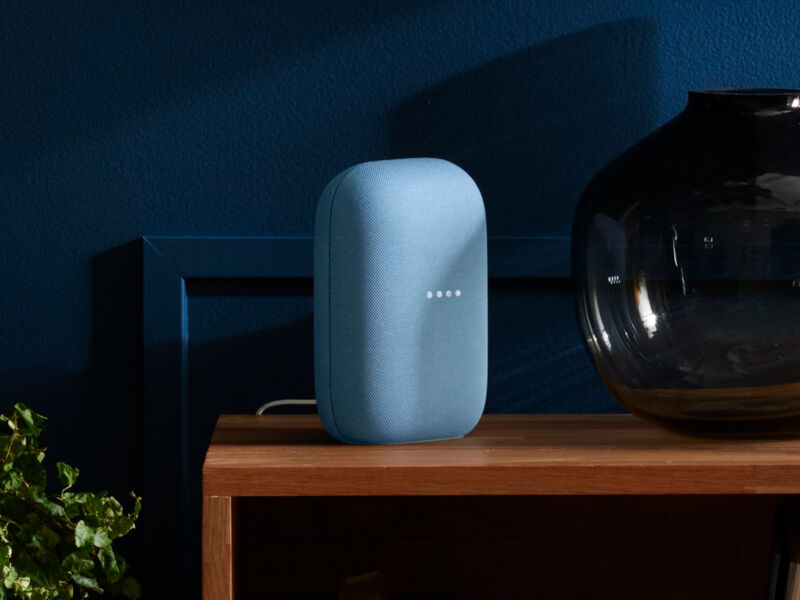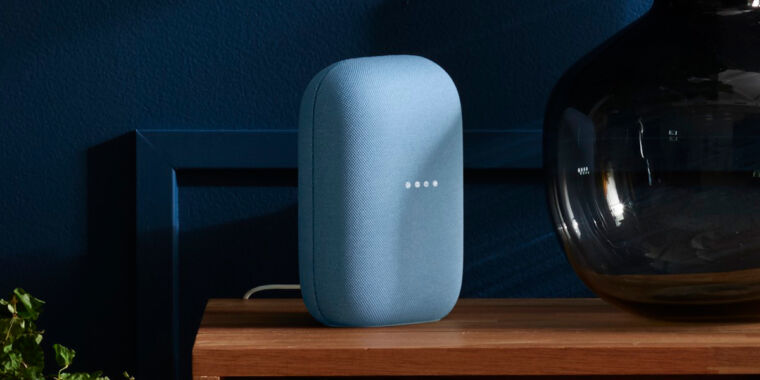
Following a preliminary ruling in August, the US International Trade Commission has issued a final decision saying that Google infringed five Sonos smart speaker patents. It would be possible for this ruling to result in some products like the Nest Audio, Chromecast, and Pixel line being banned in the US, but Google has prepared ITC-approved software downgrades, which remove the infringing features from users’ products.
Sonos essentially invented the connected speaker category for streaming music, but the advent of voice assistants has led to Big Tech stomping all over Sonos’ territory. Sonos says that while it was pitching Google for support of Google Play Music, Google got a behind-the-scenes look at Sonos’ operations in 2013. Sonos says Google used that access to “blatantly and knowingly” copy Sonos’ features for the Google Home speaker, which launched in 2016. Sonos sued Google in early 2020.
Eddie Lazarus, the chief legal officer at Sonos, told The New York Times, “We appreciate that the ITC has definitively validated the five Sonos patents at issue in this case and ruled unequivocally that Google infringes all five. That is an across-the-board win that is surpassingly rare in patent cases.”
Sonos’ patents all deal with setting up and controlling groups of speakers. It’s probably best to just look at what’s changing, since Google’s response to the situation has been to push out a software update that removes or works around the infringing patents. On a Google Nest Community post called “Upcoming Speaker Group changes,” a Google rep tells customers:
Due to a recent legal ruling we’re making some changes to how you set up your devices and [how] the Speaker Group functionality will work moving forward. If you’re using the Speaker Group feature to control the volume in the Google Home app, by voice with the Google Assistant, or directly on your Nest Hub display, you’ll notice a few changes:
- To adjust volume on your speaker groups, you will need to adjust each speaker individually instead of using the group volume controller. You’ll also no longer be able to change your Speaker Group volume using your phone’s physical volume button.
- Most Speaker Groups should continue functioning as expected unless you have a speaker group containing other brands of Cast-based devices, like JBL or Lenovo. They need to be on 1.52.272222 or higher Cast firmware version. Check out this article on how to find your device’s firmware version or contact your device maker.
- A small set of users will need to use the “Device Utility app” (DUA) to complete product installation and updates. You may receive a prompt to download and run DUA, and it will ensure that your device is connected to Wi-Fi and receives the most updated software version.
We will continue to support our users and work to minimize any additional changes.
The volume change is the biggest annoyance on this list. Previously, it was possible to control every playing speaker with a single slider and change the group speaker volume by voice; now, it sounds like only individual controls will be available. Google is also removing the ability to control the volume of speaker groups via your phone’s physical volume buttons, a feature that was axed early in the Android 12 update. It sounds like it’s also not possible to set speaker group volume via a smart home routine anymore.
The comments on Google’s post are worth a read, as it’s filled with angry customers demanding refunds and threatening lawsuits. One user sums up the customer reaction nicely, saying, “So you got sued by Sonos and we pay the price? Either get some better lawyers and win the suit, or pay Sonos a royalty, or start issuing refunds to customers.”
Despite Sonos’ win, the company hasn’t gotten the outcome it wants. Sonos wants Google to pay royalties for its patents, not pull the rug out from under consumers by stripping features from already-purchased products. It sounds like until that happens, Sonos is going to continue applying pressure to Google. Sonos’ victory statement closes with:
It is a possibility that Google will be able to degrade or eliminate product features in a way that circumvents the importation ban that the ITC has imposed. But while Google may sacrifice consumer experience in an attempt to circumvent this importation ban, its products will still infringe many dozens of Sonos patents, its wrongdoing will persist, and the damages owed Sonos will continue to accrue. Alternatively, Google can—as other companies have already done—pay a fair royalty for the technologies it has misappropriated.
